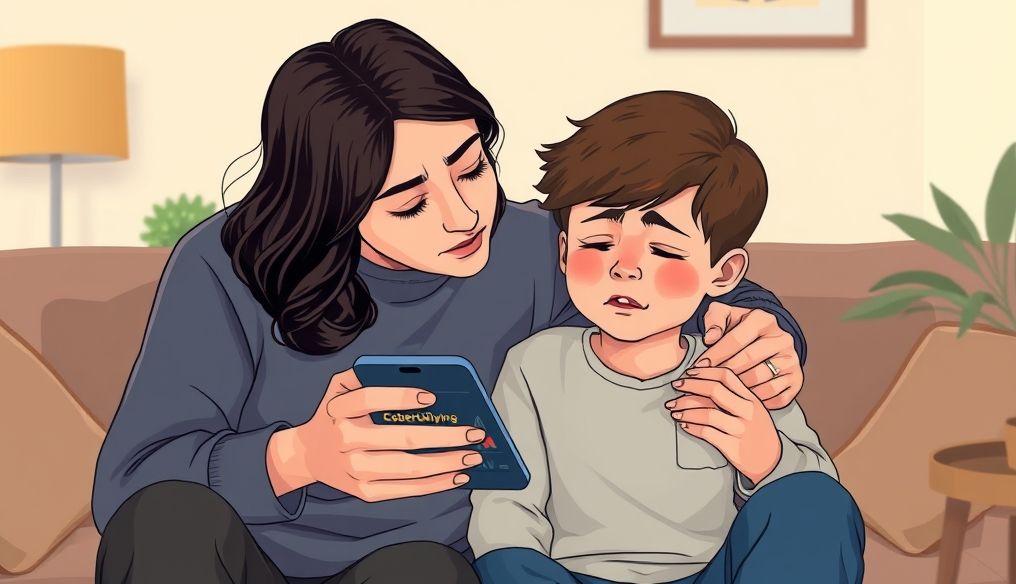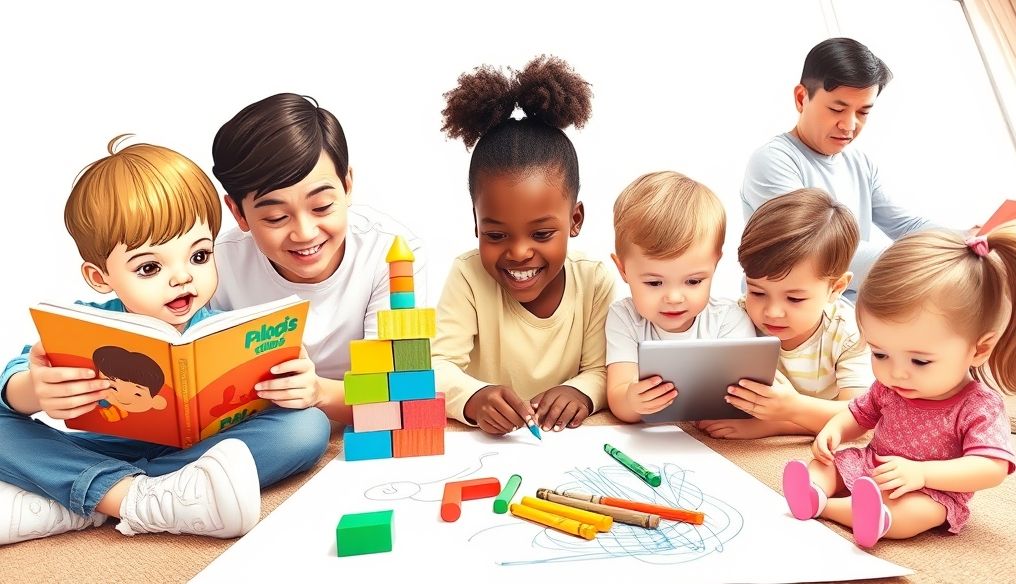What are the Signs of Bullying and How Can You Protect Your Child From It?
Bullying is a global phenomenon that affects children and adolescents around the world. It can have devastating effects on victims, leading to psychological, physical, and social health problems. It is important for parents and caregivers to be aware of the signs of bullying and take steps to protect their children.
Chapter 1: Understanding Bullying
What is Bullying?
Bullying is a repeated aggressive behavior aimed at harming or subduing another person. It can take many forms, including:
- Physical Bullying: Hitting, kicking, pushing, or damaging someone else's property.
- Verbal Bullying: Insulting, threatening, teasing, or spreading rumors.
- Social Bullying: Excluding someone from a group, spreading rumors, or damaging their reputation.
- Cyberbullying: Using technology, such as social media or text messages, to harass or harm someone.
Why Do Children Bully?
There are many reasons why children bully others, including:
- Feeling Insecure: Children may bully to feel more powerful or in control.
- Seeking Attention: Children may bully to get attention from peers or adults.
- Imitating Aggressive Behavior: Children may learn to bully by watching others bully, whether at home, at school, or in the media.
- Lack of Empathy: Some children may not have the ability to understand or care about the feelings of others.
Chapter 2: Signs That Your Child is Being Bullied
It can be difficult to know if your child is being bullied, especially if they are afraid or ashamed to talk about it. However, there are some signs to watch out for:
- Changes in Behavior: Your child may become more withdrawn, anxious, angry, or sad.
- Problems with Sleep or Eating: Your child may have trouble sleeping or eating, or they may change their eating habits significantly.
- Decline in Academic Performance: Your child's performance in school may suddenly drop.
- Loss of Interest in Activities: Your child may lose interest in activities they used to enjoy.
- Unexplained Injuries: Your child may come home with bruises, scratches, or cuts without a clear explanation.
- Loss or Damage to Property: Your child may lose or damage their belongings frequently.
- Reluctance to Go to School: Your child may refuse to go to school or pretend to be sick to avoid going.
Chapter 3: Signs That Your Child is Bullying Others
It is also important to be aware of the signs that may indicate that your child is bullying others. These signs include:
- Aggressive Behavior: Your child may be physically or verbally aggressive towards others.
- Desire to Control: Your child may try to control or subdue others.
- Lack of Empathy: Your child may not show any empathy for victims of bullying.
- Justifying Aggressive Behavior: Your child may justify their aggressive behavior or deny that they are bullying others.
- Getting Pleasure from Harming Others: Your child may enjoy harming or teasing others.
Chapter 4: How to Protect Your Child from Bullying
There are many things you can do to protect your child from bullying, whether they are a victim or a bully:
Build Your Child's Self-Esteem
Help your child develop self-confidence by encouraging them to pursue their interests, develop their skills, and celebrate their achievements. Teach your child to love and respect themselves regardless of the opinions of others.
Teach Your Child Communication Skills
Teach your child how to express their feelings in a healthy way and how to stand up for themselves without resorting to violence. Encourage your child to talk to you or a trusted adult if they are being bullied.
Communicate with the School
If you suspect that your child is being bullied at school, talk to the teachers and administration. Work with them to develop a plan to stop the bullying and protect your child.
Monitor Your Child's Online Activity
Monitor your child's online activity and make sure they are using technology safely and responsibly. Teach your child how to recognize and report cyberbullying.
Be a Good Role Model
Be a good role model for your child by treating others with respect and empathy. Avoid using abusive or aggressive language, and try to resolve conflicts peacefully.
Chapter 5: Dealing with Cyberbullying
Cyberbullying is an increasing form of bullying that can have devastating effects on victims. It is important to be aware of the signs of cyberbullying and take steps to protect your child.
Signs of Cyberbullying
- Changes in Technology Use: Your child may spend more or less time than usual online or on their phone.
- Secrecy About Online Activity: Your child may become secretive about their online activity and try to hide what they are doing.
- Anxiety or Depression After Using the Internet: Your child may feel anxious, depressed, or angry after using the Internet.
- Receiving Abusive Messages or Images: Your child may receive abusive or threatening messages or images online.
How to Deal with Cyberbullying
- Talk to Your Child: Talk to your child about cyberbullying and how to recognize and report it.
- Keep the Evidence: Keep copies of abusive messages or images as evidence.
- Report the Bullying: Report the cyberbullying to the internet service provider or the social media site in question.
- Block the Bully: Block the bully from contacting your child online.
- Seek Help: If your child is suffering from the effects of cyberbullying, seek help from a counselor or therapist.
Chapter 6: The School's Role in Combating Bullying
Schools play a crucial role in combating bullying. Schools should have clear anti-bullying policies and implement them effectively. Schools should also provide educational programs for students about bullying and how to prevent it.
Anti-Bullying Policies
Anti-bullying policies should include a clear definition of bullying, penalties for bullies, and procedures for reporting and investigating bullying. These policies should be available to students, parents, and staff.
Educational Programs
Schools should provide educational programs for students about bullying and how to prevent it. These programs should teach students how to recognize bullying, how to defend themselves, and how to report bullying.
Staff Training
Schools should provide training for staff on bullying and how to deal with it. Staff should learn how to recognize the signs of bullying, how to intervene to stop bullying, and how to support victims.
Chapter 7: The Parents' Role in Helping the Bullying Child
If you discover that your child is bullying others, it's important to take immediate action. Bullying is not just a "passing phase"; it's a dangerous behavior that can have serious consequences for your child and their victims.
Understanding the Reasons
Try to understand the reasons why your child is bullying. Do they feel insecure? Are they trying to get attention? Are they imitating aggressive behavior? Once you understand the reasons, you can start to address the problem.
Setting Clear Boundaries
Tell your child clearly that bullying is unacceptable and that there will be serious consequences for this behavior. Be firm and consistent in applying these consequences.
Teaching Empathy
Help your child understand the feelings of others and learn to empathize with them. Talk to your child about the effects of bullying on victims and encourage them to put themselves in their shoes.
Seeking Professional Help
If your child is experiencing serious behavioral problems, seek help from a counselor or therapist. Therapy can help your child develop healthy social skills and learn how to deal with their emotions in constructive ways.
Chapter 8: Building a Supportive Community
Combating bullying requires a collective effort. Parents, schools, and the community as a whole must work together to create a safe and supportive environment for children.
Encouraging Positivity
Encourage positivity and respect in your home, school, and community. Celebrate differences and appreciate diversity. Teach children to be kind and compassionate to each other.
Intervening When Seeing Bullying
If you see someone being bullied, intervene to stop the bullying. You can simply say to the bully "That's not okay" or offer help to the victim. If you are unable to intervene safely, report the bullying to a trusted adult.
Supporting Victims
If you know someone who is being bullied, offer them support. Listen to them, empathize with them, and tell them they are not alone. Encourage them to talk to a trusted adult and offer to help them get the help they need.
In conclusion: Protecting our children from bullying is a shared responsibility. By understanding the signs of bullying and taking steps to protect our children, we can create a safer and more supportive environment for all children.




